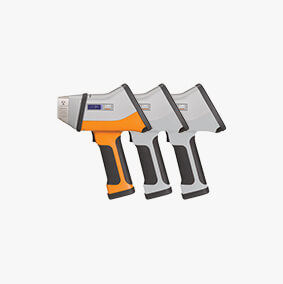What is XRF (X-ray fluorescence)?
X-rays form part of the electromagnetic spectrum and are expressed in terms of their energy (kilo electron volts – keV) or wavelength (nanometers nm). XRF (X-ray Fluorescence) is a consequence of changes that take place within an atom. A stable atom comprises a nucleus and the electrons orbiting it. Orbiting electrons are organised into shells: each shell is made up of electrons with the same energy. When a high energy incident (primary) X-ray collides with an atom it disturbs this stability. An electron is ejected from a low energy level (eg K shell: see diagram) and a space is created. As a result an electron from a higher energy level (eg L shell) falls into this space.
The difference in energy produced as the electron moves between these levels is released as secondary X-rays which are characteristic of the element. This process is called XRF.
XRF is a proven technique for material analysis in a broad range of industries and applications; from Positive Material Identification, scrap metal sorting, measuring sulfur in oil, analysing coating thickness of metal finishing and metal alloys to quality control in the electronics and consumer goods industry.
Benefits of analysis by XRF include:
- Minimal or no sample preparation
- Non-destructive analysis
- Na11 to U92 analysis, ppm to high % concentration range
- No wet chemistry – no acids, no reagents
- Analysis of solids, liquids, powders, films, granules etc.
- Rapid analysis – results in minutes
- Qualitative, semi-quantitative, to full quantitative analysis
For routine quality control analysis instrument can be ‘used by anyone’ XRF is an easy to use, fast and accurate quality control method for a wide range of industries and applications.
Learn More